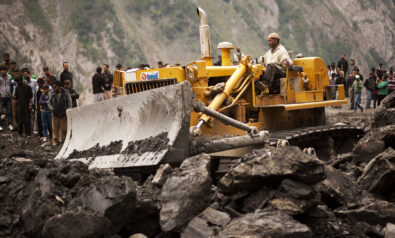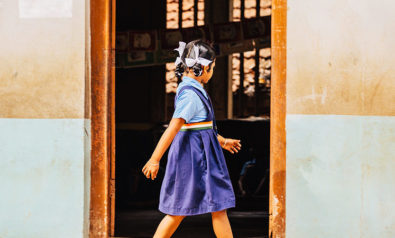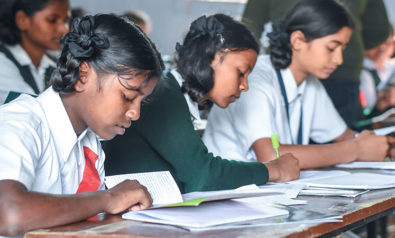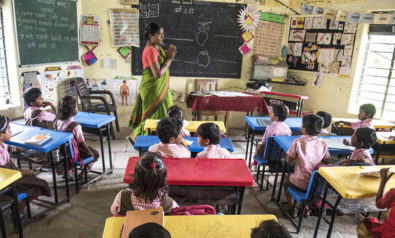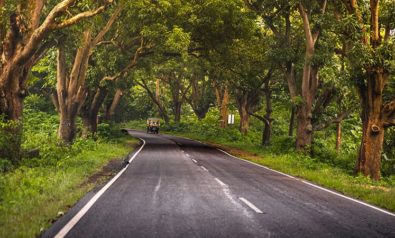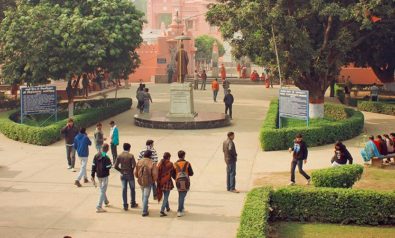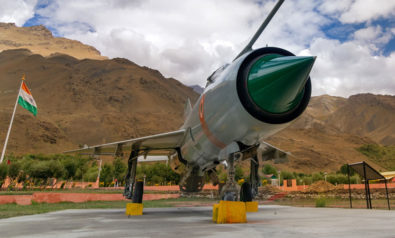When Alexander the Great marched into Phrygian, the capital of Gordinium, in 333 BC, he was told that an oracle had declared that any man who could unravel the Gordian knot — deemed impossible to untangle — would rule over Asia. After wrestling with the knot for a time with no success, Alexander drew his sword and cut the knot into half with a single stroke. To paraphrase the Bard of Avon, police reforms in India await a similar creative solution to a seemingly insurmountable problem.
360˚ Context: The State of the Indian Republic
It is ironic that, more than seven decades after independence, the police in India are still governed by the Indian Police Act of 1861. The British introduced this act immediately after what they called the 1857 Sepoy Mutiny. As per the Commonwealth Human Rights Initiative, the 1861 legislation was enacted with “the purpose of crushing dissent and any movement for self government.” After the 1857 uprising, the British monarchy took over from the East India Company, creating a colonial administrative architecture that would become the jewel in its crown. Along with the 1861 act, the 1860 Indian Penal Code was a major pillar of the new criminal justice system that served London well until India’s independence in 1947.
The Legacy of the Raj
Independent India adopted a new constitution that gave states jurisdiction over the police. Henceforth, it was not New Delhi but state capitals that controlled policing. However, those who drafted the constitution failed to craft legislation to create a new police force in tune with the new demands of democracy. The police force retained its colonial character, carrying the will of its new political masters. Order ordained by these masters had to be maintained. The rule of law and due process were to play second fiddle.
Like many former colonies, India became a democracy in form while its police force remained colonial in spirit. In the first few decades after independence, the combination of enlightened leaders, ignorant public opinion, some outstanding officers and the broad hegemony of one political party papered over the incongruity of the arrangement. That could not, and did not, last.
From the 1960s, Indian politics became increasingly fractious. By the mid-1970s, the pulls and pressures on police departments, thanks to political interference, increased dramatically. Inadequate organizational structure, exploitative ethos and brutal behavior came to typify the police force. In 1975, then-Prime Minister Indira Gandhi, the daughter of Jawaharlal Nehru, used the police to impose a state of emergency on the country. As in colonial times, the police suppressed civil liberties, foisted false cases on the ruling party’s political opponents and even enforced sterilization on unwilling young men under a draconian family planning plan.
In 1977, the opposition won a historic victory. Immediately after taking power, the new government instituted the National Police Commission (NPC) to review India’s system of policing and suggest reforms. It produced eight reports, including a Model Police Act, between 1979 and 1981. It also appointed a commission of inquiry under a retired chief justice of India, J.C. Shah. Its 1978 report chronicled the excesses, malpractices and misdeeds of the government during the emergency. It found that the police had obediently and brutally carried out instructions of its political masters, cowing the country into submission.
To date, these reports have been gathering dust. Governments have come and gone since 1981. They have implemented peripheral recommendations but ignored substantive ones that relate to accountability and autonomy.
Echoes Across the Country
In 2020, the police are still bound by diktats of the political bosses. The Delhi riots earlier this year prompted allegations of political interference, a repeat of what happened in the 1984 unrest. It moved Julio Ribeiro, one of the country’s most respected police officers, to write a letter to the police chief of Delhi. He asked for a fair probe into the riots and questioned why the police did not investigate members of the ruling party for delivering hate speeches.
Ribeiro’s question can be echoed across the country. The chief ministers of India’s 28 states control the police just as British governors once did. Politicians pay lip service to police reforms but are unable to let go of the power they wield. At its essence, there is a fundamental asymmetry of power between the police and the citizens: The former are not accountable to the latter. The police answer only to their political and bureaucratic bosses.
The failure of politicians to reform the police has led to citizens and retired senior police officers appealing to the judiciary for change. In 2006, the Supreme Court of India passed a landmark judgment and gave seven clear directives. The government of India and its federal counterparts in state capitals were supposed to implement these directives. Instead, most have been ignored or implemented half-heartedly. As a result, many a chief justice had lamented that not a single state government is willing to cooperate: What’s to be done?
The power politicians wield in various state capitals comes from Section 3 of the 1861 Police Act, which states: “The superintendence of the police throughout a general police-district shall vest in and shall be exercised by the State Government to which such district is subordinate, and except as authorized under the provisions of this Act, no person, officer of Court shall be empowered by the State Government to supersede or control any police functionary.”
Simply put, chief ministers and their consiglieres, the senior officers of the elite Indian Administrative Service and Indian Police Service (IPS), control every district in their states. The Model Police Act drafted by the NPC more than four decades ago recommended a tempering of this unfettered power of state governments. Its Section 39 provides for the state government to “exercise its superintendence … in such manner … as to promote the professional efficiency of the police.”
The Second Administrative Reforms Commission (ARC) set up by the Indian government concluded that the proposed Section 39 was insufficient to provide police autonomy. Informal and often illegal instructions to the police are pervasive. It recommended that an amendment to the Model Police Act that expressly forbade illegal or mala fide demands from the police. It also recommended that obstruction of justice be categorized as an offense. Needless to say, the government of India is yet to accept the ARC’s recommendations, let aside implement them.
Crime Pays
This politics-police equation is completely lopsided, with India’s law enforcement the handmaiden of the politicians in power. This has been supported by numerous committees such as the one headed by Justice K.T. Thomas and scholars like Milan Vaishav. In fact, Indian voters have been increasingly electing politicians who face criminal proceedings against them. Money and muscle play a growing role in Indian politics. The result is decline, if not collapse, of the policing and criminal justice system.
After 73 years of independence, the formal institutions left behind by the British Raj are weakening. For ambitious politicians, controlling the police is an important way to secure benefits for themselves, consolidate electoral gains and distribute benefits to their supporters. If politicians control the police, they can avoid criminal investigations into their activities. They can hobble opponents with false or frivolous charges. They can also dispense patronage to their core supporters who are often members of their community. This partisan use of the police furthers identity politics in an increasingly divided land. As a result, the rule of law suffers and the Indian state weakens.
The police force itself has become politicized in many if not all states. Caste, community or religious affinity is often more important than professionalism, diligence or excellence. Many politicians try to recruit members of their own group into the police. Since police officers have job security, this social engineering of the police can institutionalize the coercive power of a group long after their politician is voted out.
The Indian police have been weighed, measured and found wanting on numerous occasions. In 1992, the police stood by as a mob demolished the Babri Masjid mosque and, 10 years later, they did the same during the 2002 Gujarat riots. The rise in extrajudicial killings demonstrates the failure of due process of law. In 2005, the BBC reported that India’s “fake encounters” — staged confrontations between criminals and the police, where the criminals mostly end up dead — were shockingly common. During the emergency in the 1970s and in recent years, the police have stifled dissent by slapping colonial-era sedition charges.
The police continue to wield repression on the streets. Beating people arbitrarily is common. In recent years, marginalized groups such as Dalits, minorities, tribesmen and women who protest peacefully have faced increased police brutality. Paul Brass has found that governments have used “curfews as means of control, victimization, and outright violence against targeted groups rather than as devices to bring peace during violent times for the benefit of all.”
Instrument of Injustice
In India, the police no longer have a reputation for probity or for being an instrument of justice. In fact, the insensitive, illegal, inhuman and indefensible handling of the September murder and gang rape of a Dalit girl in Hathras, a district in India’s most populous state of Uttar Pradesh, laid bare the utterly unprofessional work culture of the Indian police. Such conduct occurs with numbing regularity because the political elite is deeply invested in the status quo.
Prospects for reform seem dim. In 2003, R.K. Raghavan, a former director of the Central Bureau of Investigation, observed that the police would continue to do the politicians’ bidding unless certain basic reforms were enacted. The judiciary cannot enact these reforms — it is the politicians’ duty. Until “they look upon the police as a tool to settle political scores with their adversaries, nothing will improve.” Raghavan went on to argue that prospects for police reform were bleak “because the corruption that cuts across party lines, brings with it unanimity that the status quo should remain.”
In September 2020, Indian Prime Minister Narendra Modi gave a speech to graduating IPS officers and called for a trust-based policing system. He argued that those who believe that instilling fear among the populace is the most effective policing strategy are out of sync with the march of the nation and its vibrant democracy. Modi’s actions have not matched his rhetoric.
India does not need another report or judgment. It awaits a statesman who can rise above the temptations of short-term electoral gains and work for long-term national benefits and who will not hesitate to wield the sword to cut the Gordian knot that keeps the politician and the police bound together. Only then will India have rule of law, not mere order, and justice for all instead of for a privileged few.
The views expressed in this article are the author’s own and do not necessarily reflect Fair Observer’s editorial policy.
Support Fair Observer
We rely on your support for our independence, diversity and quality.
For more than 10 years, Fair Observer has been free, fair and independent. No billionaire owns us, no advertisers control us. We are a reader-supported nonprofit. Unlike many other publications, we keep our content free for readers regardless of where they live or whether they can afford to pay. We have no paywalls and no ads.
In the post-truth era of fake news, echo chambers and filter bubbles, we publish a plurality of perspectives from around the world. Anyone can publish with us, but everyone goes through a rigorous editorial process. So, you get fact-checked, well-reasoned content instead of noise.
We publish 2,500+ voices from 90+ countries. We also conduct education and training programs
on subjects ranging from digital media and journalism to writing and critical thinking. This
doesn’t come cheap. Servers, editors, trainers and web developers cost
money.
Please consider supporting us on a regular basis as a recurring donor or a
sustaining member.
Will you support FO’s journalism?
We rely on your support for our independence, diversity and quality.



